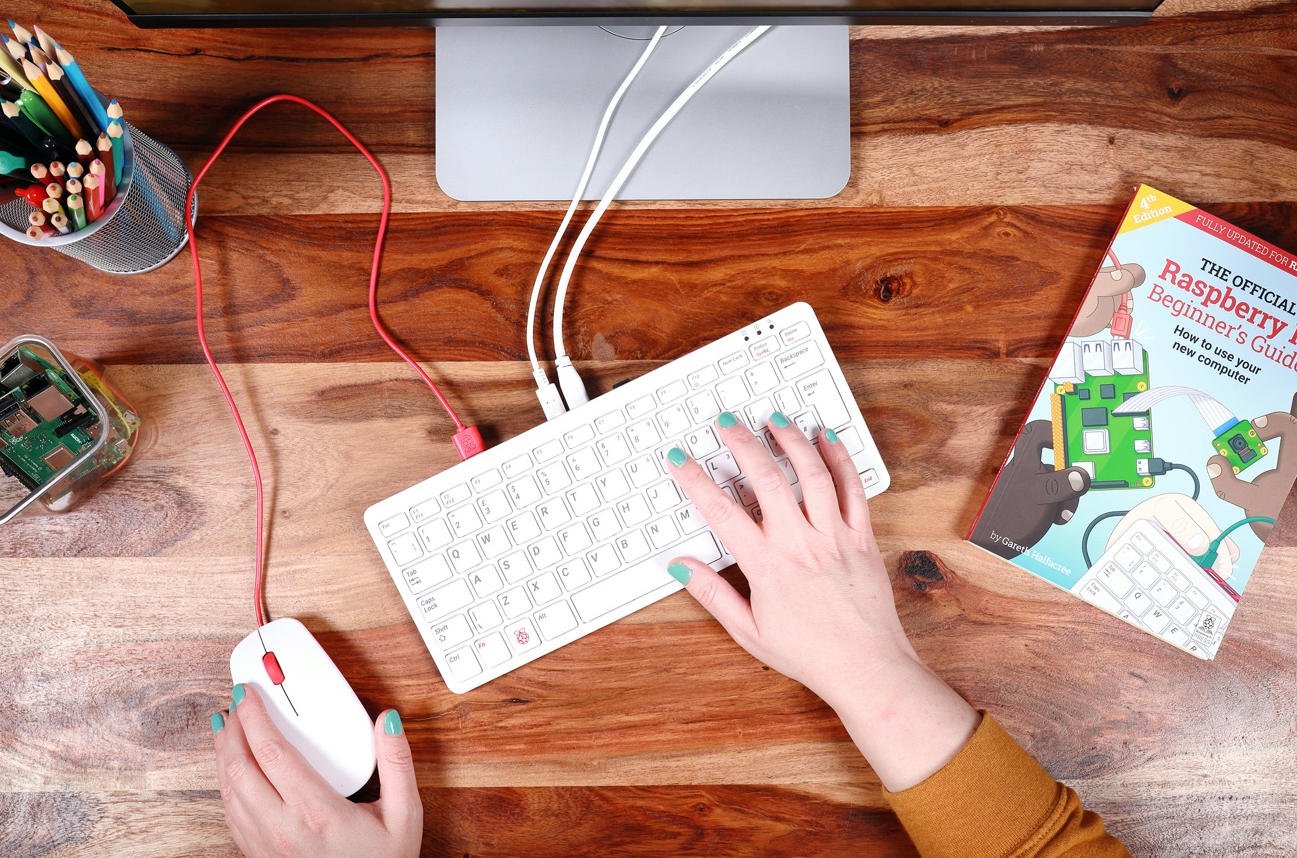Raspberry Pi 400 is an excellent idea as it simplifies setup for those who want to start enjoying the most popular single-board minicomputer on the planet from minute one, without the hassle of assembly.
The British non-profit foundation behind the Pi project has created a new solution to bring it to a wider range of users. If Raspberry Pi is an eminently modular development where optional components are added from the board, Raspberry Pi 400 is totally the opposite, a complete PC built in a compact keyboard form factor.
- Raspberry Pi Compute Module 4 launched for industrial users
- Learn how much RAM your PC has and how fast it works?
- Best free AI software for Windows PC
Putting a computer in a keyboard is nothing new and the era of modern computing beyond the IBM “Personal Computer” began practically with that type of design, from the Commodore 64 to the ZX Spectrum, including the Atari 800XL, were microcomputers with a good number of users began in the 80s.
In fact, the idea of creating Raspberry Pi 400 arose when its administrator Eben Upton contacted a group of teachers, academics and computer enthusiasts to create a computer that would encourage children to study computer science in British schools as the Acorn BBC Micro did in 1981.

Raspberry Pi 400: the all-in-one advantages
Raspberry Pi 400 includes – almost – everything you need to deploy a fully functional desktop. Its chassis has practically the same dimensions and design as the official keyboard of the project, except for its thickness to include its components and the external connectors for the supported interfaces.
Its hardware base is the same as the last Raspberry Pi 4 version, with the Broadcom BCM2711 processor with four Cortex A72 cores overclocked for the occasion at 1.8GHz (the original works at 1.5 GHz). Despite the increased speed, the cooling system remains passive without annoying fans.
Raspberry Pi 400 includes 4GB RAM (there are 2GB or GB versions also). And you can connect the internet with Ethernet and Wi-Fi 802.11b/g/n/ac of 2.4GHz and 5GHz. Plus it has Bluetooth 5 to connect with compatible devices.
Also, it has 4 USB ports, USB 3.0, a USB 2.0 and a USB Type-C for power supply; the 40-pin GPIO port; the 3.5 mm jack, plus the two micro HDMI ports with the possibility of connecting up to two 4K monitors. Raspberry Pi 4 features H.265 decoding for 4K and 60fps video, H.264 for 1080p and 60fps video and 1080p and 30fps video rendering.
Like the other versions, Raspberry Pi 400 supports microSD cards where the operating system and applications are running. It officially offers the Raspberry Pi Desktop (a Debian based Linux), others of the same cut as Ubuntu and a long etc. because Raspberry Pi today supports different software platforms including an official Microsoft Windows 10 IoT Core.
What can you do with this computer?
Raspberry Pi has long since left behind its original goal of stimulating computer science teaching in schools and today its various versions can be used for numerous projects in all areas. Raspberry Pi 400 focuses on a basic desktop PC, but this development can be used for numerous projects. Some examples of use:
- For programming
- As a multimedia center for Kodi or Netflix
- As an anonymous router for TOR
- For gaming machines with an example for an NES Classic Edition
- As a tablet
- As a universal translator
- As recreational in minimum size
- For industrial and business applications
- And even as a base for “supercomputers”
Raspberry Pi 400 is officially priced at $70 and is now available from regular suppliers in UK, French and US editions. Next week the Spanish, German and Italian versions will be added. India, Australia, New Zealand and other countries will be in stock by the end of the year.
For those who want more, Raspberry will also distribute a complete kit for $100 including:
- The new Raspberry Pi 400
- The official USB mouse
- The official USB-C power supply
- An SD card with the Raspberry Pi operating system pre-installed
- A micro HDMI to HDMI cable
- The Official Beginner’s Guide to Raspberry Pi





